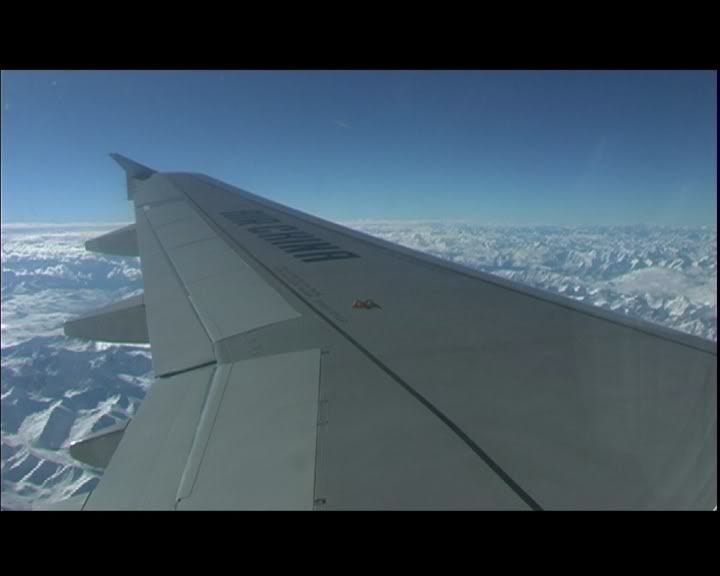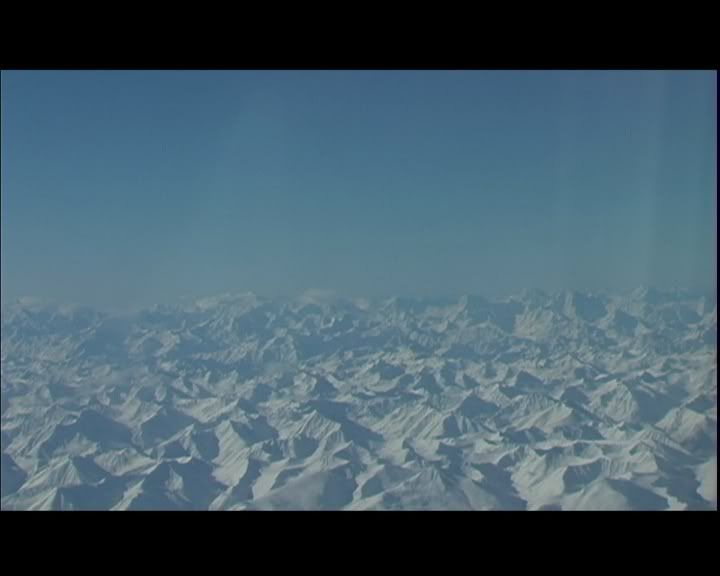7 Days in Tibet


Getting into the Autonomous Region of Tibet is not simple. The only way in as a tourist is to either get a special permit in Beijing, which is often problematic. One option is to sign up for a tour through a place called Sam's Guesthouse in the Western Chinese city of Chengdu. This is what we did. For 225 dollars, you get a direct flight into Lhasa and, more importantly, you get a place in a fake tour of Tibet and thus, a permit to travel in Tibet. The tour of Tibet begins and ends unceremoniously in Chengdu airport. If I didnt know better, I would have been pretty disappointed with this tour I paid for. The funny thing was that we actually had a tour guide. If this tour guide was a seeing-eye dog, he would have escorted his blind owner five feet from a 50 foot cliff only to then release itself from the leash and proceed to non-chalantly lick his own balls. Our tour guide never introduced himself, never pointed out one interesting thing about Chengdu, Tibet, or even the airport. He simply picked us up at Sams, drove us to the airport, picked up our ticket, and escorted us to the gate. He didnt even say goodbye or wish us a good trip. Next thing we knew, we were on the plane to Lhasa, what would be the highest capital in the world if Tibet really was a sovereign nation.
Me at the Potala Palace in Lhasa. This was the former winter residence of the Dalai Lama.
Pilgrim worshipping with Chinese cop looking over
Despite its rosy-sounding official name, Tibet is by no means autonomous. Lhasa is flooded with Chinese flags, institutions, and symbols. Mao's face is more ubiquitous than the Dalai Lamas. On every storefront, Chinese letters overshadow their Tibetan counterparts. Two of the largest buildings in Lhasa house the China Post and the Bank of China. There is Chinese food on every corner and it seemed like one of every two people was of Han Chinese descent. Actually, it is a fact that most Tibetans live outside Tibet, in other provinces in China or in Nepal, India, or in the US.
Some of our subjects.
Even after the Chinese influence and the Tibetan exodus after the Cultural Revolution, Tibet does wield a certain magic that is distinctively Tibetan. And how can I forget the landscape. Ahh, the landscape. Shangri-la, the rooftop of the world, looks like it could be the stunning backdrop to some futuristic James Bond film. Its white-capped mountains and perfectly blue skies seem to pulsate an invisible energy. An amazing rush encompasses you as you first step outside the airport and breathe that pure, thin air. Oxygen levels are so low that 3 out of 4 new arrivals suffer from Acute Mountain Sickness (AMS) Symptoms include nausea, headache, and dizziness. My first day there I felt all three symptoms, so I took some supplementary oxygen.
I learned very quickly about the importance of Yaks in Tibetan culture. They use every part of their body, including the dung which they burn for heat and fuel. I ate a delicious Yak steak, which had a gamy, smoky flavor that helped you forget about all the dead Yaks you see hanging from the restaurants open kitchen.
We had some very successful interviews and got some amazing and controversial material. One women who we befriended trusted us enough to show us her private shrine, and in it, a photo of His Holiness the Dalai Lama. Possessing an image of the Dalai Lama is a serious offence in Tibet so we will have to blur out her face in the video for her protection. We also toured a museum with old photos of monasteries destroyed by the Chinese in the Cultural Revolution. I gained a new appreciation for the Tibetan people in their ability to remain true to their pacifistic beliefs in the face of Chinese persecution, and now, Westernization.
Although Mickey Ds is not yet in Tibet, I would give it about 5 years. Theres a new railroad being installed, an amazing feat of engineering and the highest in the world, and it is likely to increase the number of tourists and Chinese that infiltrate Tibet. If Tibet follows Chinas footsteps into the Westernization, a decision that is sadly not theirs to make, I can only see a further distillation of this once strong and unified culture in the future.
Sadly, the once nomadic and independent Tibetans are quickly becoming spokes on the Chinese economic wheel. Tibet is ostensibly the poorest region in China. With more and more Chinese tenants moving in and large government contracts providing the best jobs in Tibet, you are at an economic disadvantage if you do not speak Mandarin Chinese. As it stands now, Tibetans are treated as second class citizens in their own land, receiving only the most menial jobs. Despite the economic hardships, Tibetan culture seems to be flourishing. While the Dalai Lamas Potala Palace remains empty, other monasteries have been rebuilt and seem to be flourishing. The streets are flooded with worshippers spinning prayer wheels, pilgrims can be seen doing kora, and prayer flags adorn the roof of the Tibetan style homes.
Tibetan architecture with the prayer flags on the highest point so that the wind carries the prayers to the heavens.
Monks debate Buddhist philosophy with gusto for two hours each day at the Sera Monastery.
I was fortunate to witness a ceremony for the 11th Panchen Lama, the second-highest soul in Tibetan Buddhism. (Disclaimer: There is much controversy as to who the real Panchen Lama is. The appointment of the Dalai Lama was kidnapped presumably by the Chinese and at 15 is considered the worlds youngest political prisoner. He is locked up somewhere in China. The Chinese then appointed their own Panchen Lama, who was the one I saw entering his monastery in Shigatse in the most regal and colorful of ceremonies.) There were hundreds of Tibetans at the ceremony. I later learned that the Chinese police forced one representative to attend the ceremony under threat of heavy fines or incarceration. Needless to say, it felt a little strange honoring the Chinese Panchen Lama knowing that the real Panchen Lama is in jail somewhere.
The "Panchen Lama" is the one under the umbrella with the tallest yellow hat
Now on to the fun stuff. We decided to take a jeep trek from Lhasa through the Himalayas to Kathmandu, Nepal, an 865 km journey. It was a misadventure from the start. We rented the cheapest jeep available and we soon regretted it. We were traveling with an Indian travel agent, a Brazilian liver transplant surgeon, an American backpacker, and our Tibetan driver. The Brazilian surgeon needed to get to Kathmandu in 3 days for a flight, which left us very little time for mishaps. And boy did we have mishaps. The trip was a predictable sequence of filming majestic scenery, car problems, freezing our asses off, and feeling like a bobble-head on potholed dirt roads while anxiously waiting for the next car problem. After an ambitious pre-dawn wake up, we had our first flat tire a half hour into the trip. We did have a spare but our jack wasnt the right size. So we waited a half hour for the next car to come, who offered us a jack and we were on our way. Total Freezing Our Asses Off Time: 45 minutes. The next day at nightfall we suffered a flat on the spare tire and we managed to change it pretty quickly. Total Freezing Our Asses Off Time: 15 minutes. About 10 minutes after fixing the flat, the engine sputtered and our driver suddenly realized we were out of gas. After a long wait and a lot of complaining by the Brazilian, who began to question his sanity for going on this trip in the first place, a truck stopped next to us to help us. We found a thin rope and hitched it to our jeep and got towed to the next town about 10 kilometers. Total Freezing Our Asses Off Time: 1 hour. The next day started out rough. The Brazilian was in such a rush to get going in the morning that he left his entire backpack at the guest house. All he had on him was his passport, 50 rupees, and a toothbrush. By the time he realized it we were 10 hours into the drive and it was too late to go back. At this point we were 5300 meters up approaching a snowy, windy, freezing cold pass when...boom...another flat. This time I didn't even react or get out of the car. I waited inside, shivering. I learned the great news that our spare was also flat. We were going to be there for a while. We waited and waited for the exact same crappy model of jeep with the same crappy model of tires on a tiny dirt road in the middle of the Tibetan himalayas. I began scanning the horizon, looking for a tasty Yak while gripping my pocketknife, wondering what the best way would be to kill and skin a Yak. Luckily for me and the yak, when the exact same jeep model came around the bend I thought I was delirious. And when our driver began to pop on a brand new spare, I was too cold to react...but let's just say I was releived. Total Freezing Our Asses Off Time: 2 hours. So after 3 flat tires, and completely out of fuel, spares, food, and patience, we made it to the Nepali border. The next day we were in Katmandu. The Brazilian bought some toothpaste to go with his toothbrush. We joked that he should check his toothbrush under the plane with one of those luggage tags wrapped around it and then frantically and dramatically reclaim it in Brazil, "There's my toothbrush, my green toothbrush. It's here!" Our first night in Katmandu, eating a delicious pepper steak and drinking an Everest Beer, I suddenly missed freezing my ass off in Tibet and wished to be back there. Life is funny that way.
STUCK!
Our driver spent more time under the car than in it
The Friendship Highway affords a nice view of the north face of Chomolongma (AKA Mount Everest). You can drive off the route for 100 km and reach the base camp on the Tibetan side. Since most succesful ascents are on the Nepali side, Adrian and I decided it was best to wait till Nepal before we climbed it.
Chomolongma in Tibetan means "Goddess Mother of the Universe"
“The power of such a mountain is so great and yet so subtle that, without compulsion, people are drawn to it from near and far, as if by the force of some invisible magnet; and they will undergo untold hardships and privations in their inexplicable urge to approach and to worship the centre of this sacred power…This worshipful or religious attitude is not impressed by scientific facts, like figures of altitude, which are foremost in the mind of modern man. Nor is it motivated by the urge to conquer the mountain…”
-Lama Angarika Govinda “The Way of the White Clouds”

